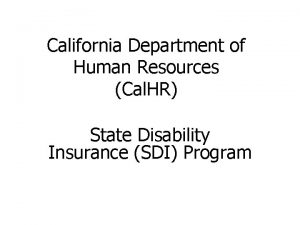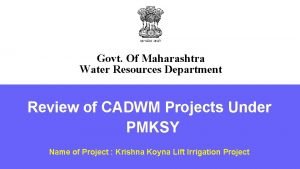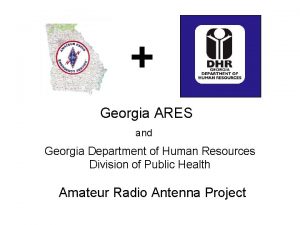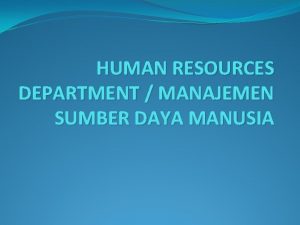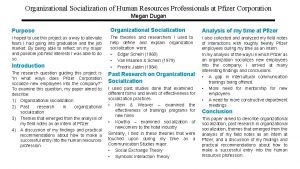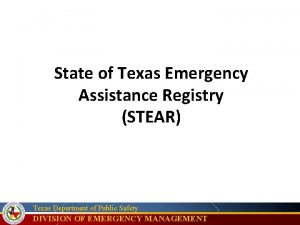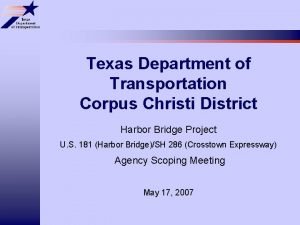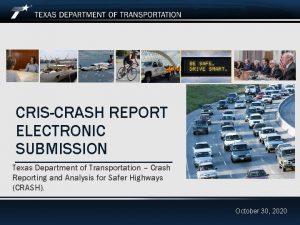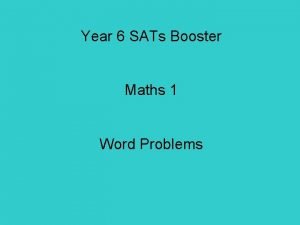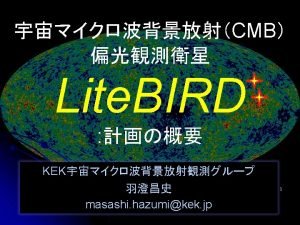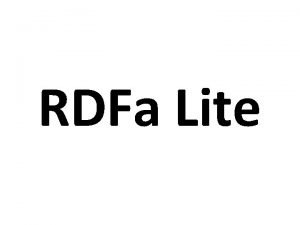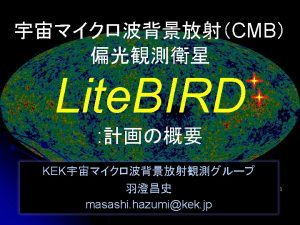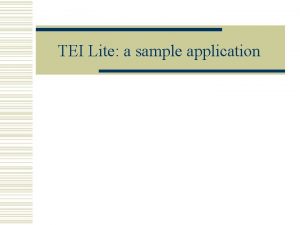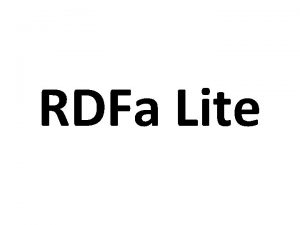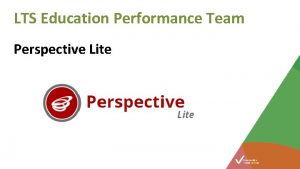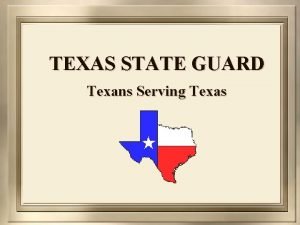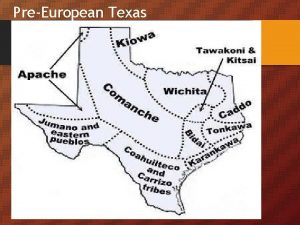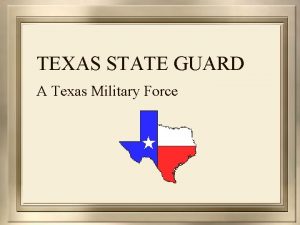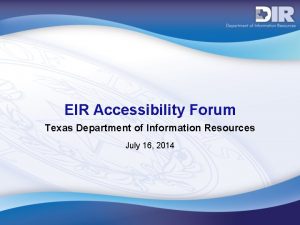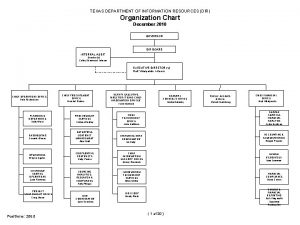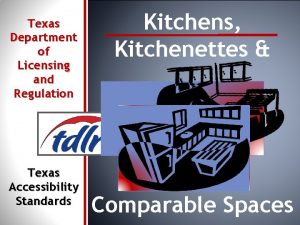Texas Department of Information Resources Presents PM LITE
























- Slides: 24

Texas Department of Information Resources Presents PM LITE 2. 0 PROCESS TRAINING DIR PM Lite 2. 0 Process Training | v 2. 0 1

PM LITE 2. 0: Project Management Process • PM Lite (Project Management Lite) is a project management process made up of tools, templates, and best practices that empowers its users to be more efficient and effective in project delivery regardless of project size or complexity. • In PM Lite’s most recent release (PM Lite 2. 0) DIR’s PPMO simplified Project Management Institutes (PMI) project management processes facilitating a “liter”, and easy to use, toolset that aligns to a global standard. • The Program and Portfolio Management Office (PPMO) at DIR have created the PM Lite process to help enable state and local entities to achieve their core missions through successful project delivery. PM Lite is an optional process. Using these tools and templates can help your organization achieve project consistency, standardization, and project success. DIR PM Lite 2. 0 Process Training | v 2. 0 2

PM LITE 2. 0: Processes, Tools, and Templates Processes • Process Documentation Tools • PM Lite 2. 0: Process Training • Glossary • Best Practices DIR PM Lite 2. 0 Process Training | v 2. 0 • Business Case* • Meeting Notes • Project Charter* • Status Reports • Project • Project Change Management Plan Request • Requirements Document • Milestone Timeline • Project Register* • Project Schedule* • Lessons Learned* • Project Closure* * Highly Recommended 3

PM Lite 2. 0 Process DIR PM Lite 2. 0 Process Training | v 2. 0 4

Portfolio Review (Pre-Initiation) TEMPLATE Business Case The Portfolio Review is a DIR internal process for prioritizing, aligning, and evaluating project requests. When the business idea is submitted by the Project Sponsor the Portfolio Review Board reviews and assigns the project idea to a Project Manager based on prioritization and strategic alignment. DIR PM Lite 2. 0 Process Training | v 2. 0 5

Portfolio Review • Business Case PURPOSE The Business Case defines the business need along with the necessary information, from a business standpoint, to determine whether or not the project is worth the required investment. It demonstrates alignment to business and strategic objectives and is used to prioritize the project among other project demands. HOW TO USE The Project Sponsor or Business Owner submits this template. This template will address the business issue and the expected business outcome as well as the key resources necessary for the project. It defines how the project will align to the goals of the agency and/or state. BEST PRACTICE DIR PM Lite 2. 0 Process Training | v 2. 0 Business Cases should be approved by division directors, aligned to business and strategic objectives, and prioritized among other business/project demands. 6

INITIATION The Initiation Phase reviews the business idea and turns it into a formal project. DIR PM Lite 2. 0 Process Training | v 2. 0 TEMPLATES Project Charter 7

Initiation • Project Charter PURPOSE HOW TO USE BEST PRACTICE DIR PM Lite 2. 0 Process Training | v 2. 0 The Project Charter officially authorizes the project and allocates resources. The chartering process forms the project core team and officially kicks off the project. The Charter is where you will define a project scope, create an estimated timeline, and establish a project budget. Once this document has been completed and approved, the Initiation Phase closes and the project moves into the Planning Phase. Project Charters should be developed cooperatively with the project core team and approved by the Project Sponsor, Business Owner, and resource owners. 8

PLANNING The Planning Phase develops the approach and schedule for delivering the project. The triple constraint (Scope, Schedule, and Cost) is finalized in the Planning Phase. The project team is formalized and the communications plan and project deliverables are identified. DIR PM Lite 2. 0 Process Training | v 2. 0 TEMPLATES • Project Management Plan • Requirements Document • Project Schedule • Milestone Timeline 9

Planning • • Project Management Plan Requirements Document Project Schedule Milestone Timeline Project Management Plan PURPOSE The Project Management Plan defines "how" the project is executed, monitored and controlled, and closed. HOW TO USE This template lays out a plan and strategy for “how” the project will be executed. The Project Charter defines the “what” while the Project Management Plan defines the “how”. BEST PRACTICE Use the Project Management Plan to set project team expectations, define project quality indicators, and define other subsidiary plans such as communication management, risk management, requirements management, schedule management, and change management. DIR PM Lite 2. 0 Process Training | v 2. 0 10

Planning • • Project Management Plan Requirements Document Project Schedule Milestone Timeline Requirements Document PURPOSE HOW TO USE BEST PRACTICE DIR PM Lite 2. 0 Process Training | v 2. 0 The Requirements document details specific project and product requirements that must be met to satisfy the business objectives. This template provides a mechanism to track product/project deliverables against requirements to ensure business and product requirements are met. Requirements may start out at a high level and become progressively more detailed as more information is known. Requirements must be unambiguous (measurable and testable), traceable, complete, consistent, and acceptable to key stakeholders. A requirements management plan should be defined to document how requirements will be captured, measured, analyzed, and managed. 11

Planning • • Project Schedule *Also available in Excel format. DIR PM Lite 2. 0 Process Training | v 2. 0 Project Management Plan Requirements Document Project Schedule Milestone Timeline PURPOSE The Project Schedule Template is created to help plan and track important dates within the project. HOW TO USE The Project Schedule Template is pre-configured to align to standard Project Management life cycle processes. There are two versions of the PM Lite 2. 0 Project Schedule Template. One is a Microsoft Project and the other an Excel spreadsheet. Pick the tool that works best for your project and organization. The project schedule allows you to plug in dates, resources, and budget information. Once populated with dates and resources, key performance indicators (KPIs) such as schedule variance and % complete, can then help track the project performance. BEST PRACTICE Prepare a tentative project schedule in initiation and adjust throughout the life of the project. Baselining a project schedule should occur at the conclusion of planning but may occur in initiation and re-baselined at conclusion of planning dependent on organizations policies and project details. In an effort to capture project metrics (e. g. schedule variance) and continuously improve, all project schedules/plans should be baselined. The project schedule should be used as the single source of truth regarding project schedules, baselines, and project variances. 12

Planning • • Project Management Plan Requirements Document Project Schedule Milestone Timeline The Milestone Timeline is used as a “visual” representation of the schedule for key project PURPOSE deliverables and milestones. The Milestone Timeline is beneficial for presenting a visual schedule for the project. HOW TO USE A Milestone Timeline can be created using MS Visio, a diagramming application. Once a project schedule is created the key deliverables and milestones should be mapped and aligned to the “visual” milestone timeline according to when they will occur in the project. Align key milestones and deliverables to the visual representation so the information in both the Microsoft Project Plan and the Visio are BEST PRACTICE aligned and telling the same story. The visual representation is a good tool to use in presentations as a communication tool. DIR PM Lite 2. 0 Process Training | v 2. 0 13

EXECUTION In the Execution Phase, the project plan is worked, the project deliverables are completed, and the project is implemented or “goes live. ” The Execution Phase is where the work defined in the Project Charter is performed to satisfy the project objectives. DIR PM Lite 2. 0 Process Training | v 2. 0 TEMPLATES All Project Tools 14

MONITORING & CONTROLLING The Monitoring & Controlling Phase of the project is an overarching phase that commences in the Initiation Phase and extends through Project Closure. Templates included in the Monitoring & Controlling phase include reporting, tracking, and communication tools to ensure successful project delivery. DIR PM Lite 2. 0 Process Training | v 2. 0 TEMPLATES • Project Register • Meeting Notes • Status Reports • Project Change Request 15

Monitoring and Controlling • Project Register • Meeting Notes • Status Reports • Project Change Request Project Register PURPOSE The Project Register is a tool that can be used to capture and track key project information, making it easier to monitor, control, and track project details throughout the life of the project. HOW TO USE The Project Register can be used to track action items, decisions, deliverables, risks, issues, stakeholder contact information, and more. BEST PRACTICE The Project Register should be updated regularly throughout the life of the project to ensure that all information is kept up to date. Share the Project Register with your project core team where appropriate as a means of keeping the core team apprised of key project information. DIR PM Lite 2. 0 Process Training | v 2. 0 16

Monitoring and Controlling • Project Register • Meeting Notes • Status Reports • Project Change Request Meeting Notes PURPOSE The Project Meeting Notes Template is used to document and communicate notes for all project meetings. HOW TO USE The Meeting Notes Template is meant to be utilized at all project meetings to document the meeting agenda, action items, decisions made in the meeting, who attended the meeting and scheduling the next meeting. BEST PRACTICE DIR PM Lite 2. 0 Process Training | v 2. 0 If notes are extensive, create a high-level summary section that is briefer. Project notes should be distributed in a timely fashion (one business day) to all project core team members, the Business Owner, the Project Sponsor, and other project participants. 17

Monitoring and Controlling • Project Register • Meeting Notes • Status Reports • Project Change Request Status Reports PURPOSE The Status Report is utilized for communicating the overall health of the project to the project core team and key project stakeholders to keep everyone abreast of project progress. HOW TO USE The Status Report communicates key performance indicators (KPIs), key project dates, and key risks/issues related to the project in order to keep all project players equally informed. BEST PRACTICE Status Reports should be brief, regular, clear, and should demonstrate overall project health; reporting Key Performance Indicators (KPI's) such as, % Complete, Red, Yellow, Green and Schedule Variance. Project status should be communicated weekly or bimonthly to keep members informed. DIR PM Lite 2. 0 Process Training | v 2. 0 18

Monitoring and Controlling • Project Register • Meeting Notes • Status Reports • Project Change Request (PCR) PURPOSE The Project Change Request (PCR) is used by the Project Manager to request a change to the project scope, schedule, costs, project milestones and/or deliverables. HOW TO USE Use this form to document major changes in the project that impact scope, schedule, costs, quality, or key project performance and health. This form should NOT be used to manage daily operational project management, project monitoring and control activities, as doing so will add significant overhead to the project management activities. BEST PRACTICE Potential impact of a change on project scope, schedule, and costs should be communicated to the core team. A change to the project baseline should require a Project Change Request (PCR). Each PCR should be approved by PPMO Director, Project Sponsor, and Business Owner. A PCR should first be presented/discussed with the core team and approved by the core team then approved by the Project Sponsor, and lastly the PMO/PPMO or Portfolio Manager or Director. DIR PM Lite 2. 0 Process Training | v 2. 0 19

CLOSURE In the Project Closure Phase, the project artifacts are archived in the project repository, the project activities are completed, and the project transitions to operational status. DIR PM Lite 2. 0 Process Training | v 2. 0 TEMPLATES • Lessons Learned • Project Closure 20

Closure • • Lessons Learned Project Closure Lessons Learned PURPOSE The Lessons Learned document is used to identify and preserve the lessons learned on each project. The purpose of this document is to help the project team share knowledge gained from the experience. A successful Lessons Learned program will help project teams repeat desirable outcomes and avoid undesirable outcomes. HOW TO USE Populate the Lessons Learned document using Project Register information and any other pertinent project artifacts as well as project team feedback obtained through any lessons learned brainstorming. BEST PRACTICE DIR PM Lite 2. 0 Process Training | v 2. 0 Lessons Learned are more accurate if they are tracked throughout the life of the project rather than waiting until the end. Lessons Learned should be reviewed and approved by the Project Sponsor, Business Owner, and/or Division Director. All other members of the project core team should review Lessons Learned. 21

Closure Project Closure PURPOSE • • Lessons Learned Project Closure The Project Closure document formalizes the completion of the project. HOW TO USE The Project Closure Template documents confirmation that all in scope business objectives have been met and necessary project items have been finalized. This includes making sure all listed project deliverables have been completed and project documentation saved in suitable shared storage. This template also allows you to document any outstanding actions/issues are to be handled. BEST PRACTICE Project Closure approval is needed by the Project Sponsor, Business Owner, and the PPMO/PMO Director to demonstrate approval of project closure and agreement that business objectives have been met. It is important to demonstrate that the deliverables have met the business objectives in the closure document, as well as identify unmet deliverables. DIR PM Lite 2. 0 Process Training | v 2. 0 22

PM Lite 2. 0 Process DIR PM Lite 2. 0 Process Training | v 2. 0 23

The PMBOK Guide: Project Management Body of Knowledge The Project Management Institute’s (PMI) global standards provide guidelines, rules and characteristics for project, program and portfolio management. This information is encompassed in ‘A Guide to the Project Management Body of Knowledge’ also called the PMBOK Guide. PMBOK recognizes 5 process groups (what we refer to as phases) and 10 knowledge areas, these create their 47 Project Management processes. These global standards are what PM Lite’s tools, templates, and processes are derived from. DIR PM Lite 2. 0 Process Training | v 2. 0 24
 Transformation process in operations management
Transformation process in operations management Fixed resources
Fixed resources Renewable resources vs nonrenewable resources
Renewable resources vs nonrenewable resources Human resource management 15th edition
Human resource management 15th edition Calhr fmla
Calhr fmla Maharashtra water resources department
Maharashtra water resources department Ga dhr
Ga dhr Virginia department of historic resources database
Virginia department of historic resources database Human resources department adalah
Human resources department adalah Pfizer human resources department
Pfizer human resources department Oregon water resources department
Oregon water resources department St lucie county environmental resources department
St lucie county environmental resources department Texas department of public safety
Texas department of public safety Texas state psychology
Texas state psychology Texas department of transportation corpus christi
Texas department of transportation corpus christi Ttu chemistry department
Ttu chemistry department Texasdotcrashreport
Texasdotcrashreport Identify the text structure of the following passage
Identify the text structure of the following passage Presents from my aunt in pakistan
Presents from my aunt in pakistan Pear paragraph structure
Pear paragraph structure Business agility metrics
Business agility metrics 16 3 darwin presents his case answer key
16 3 darwin presents his case answer key 15-3 darwin presents his case
15-3 darwin presents his case Zids and zods answers
Zids and zods answers Text that presents both side of the topic
Text that presents both side of the topic




